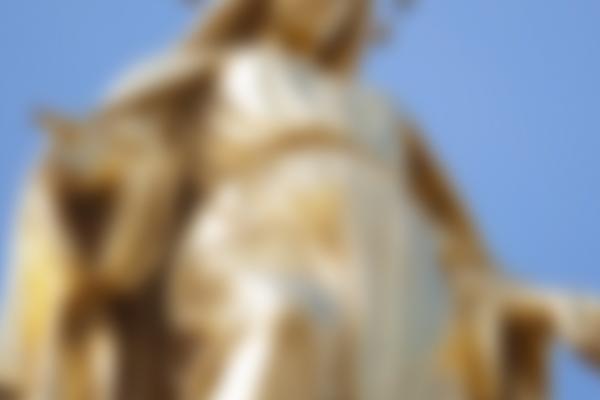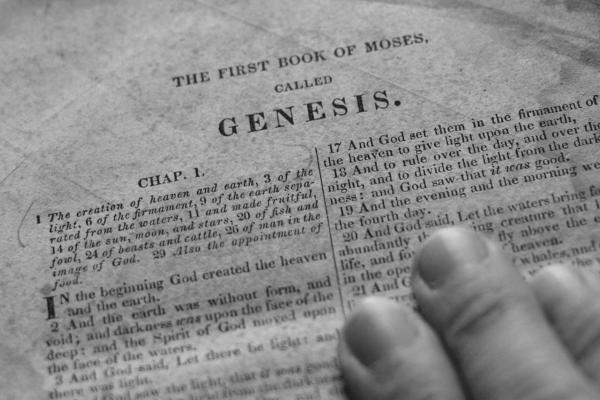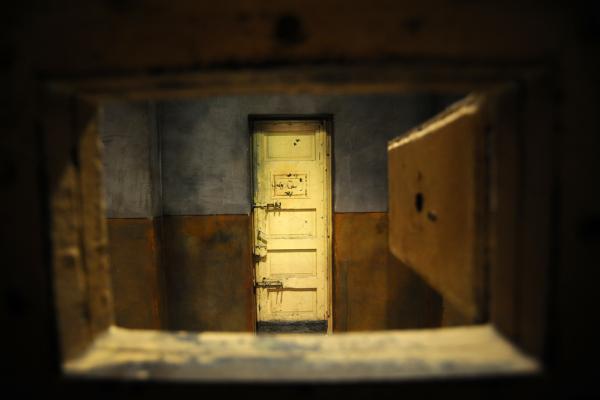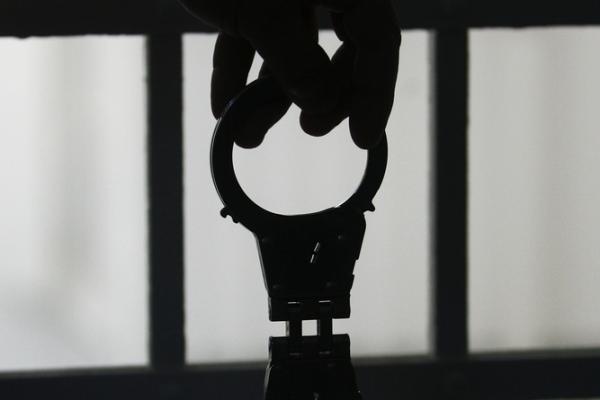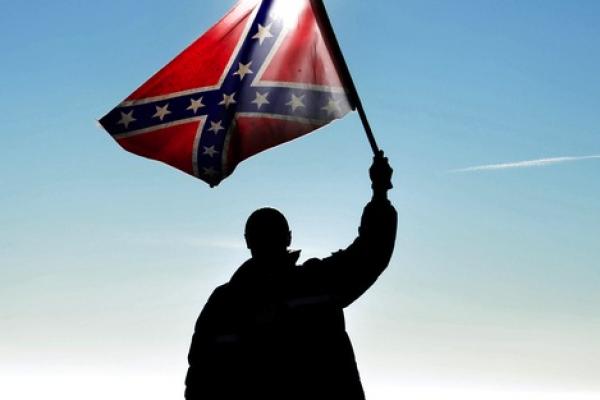I have an idea for people who value their region's heritage so much that they continue to wave what they think is the Confederate flag (even though it is actually the battle flag of Northern Virginia).
I suggest that they volunteer to be slaves. For life.
Fact: The 19th-century Southern way of life would have been impossible without enslaved people.
Fact: The one thing that could bring back that romantic bygone era would be if, once again, some 39 percent of the population were enslaved (that's the average percentage of enslaved people in the Confederate states). But this time let's recognize that no one values personal liberty as much as Southerners. And let's take their word that the Confederate flag has nothing to do with racism. Let's encourage true Confederate patriots, especially white folks who are not racists, to volunteer to work in the fields from sunrise to sunset. There will be no pay, of course, and no bothersome education; but food, lodging, and two sets of work clothes per year will be provided. And the South will rise again.
Ultimately, Christianity is about Jesus — not Christians. Although we try our best to emulate Jesus, we constantly fail, but please judge our faith based upon Jesus and not our Christian culture — because they aren’t the same thing.
Inevitably, we’ll continue to be polarizing in numerous ways across political, social, and religious platforms, and we’ll still commit bad mistakes, make hurtful remarks, and end up being wrong about many things. But for most Christians, our ultimate desire is introduce people to Jesus, who inspires us to make the world a better place by loving everyone around us to the best of our ability. God help us.
Over the last quarter century, groups like CCDA have challenged churches to be involved in community development, but there has been significantly less conversation about churches entering into the work of economic development. To do economic development well requires cultivating a wide range of collaborations – with government, corporations large and small, funders, non-profits, etc. – which is not only a slow, complicated, and intense work, but one that might raise theological red flags from many churches. I would challenge churches that might be uneasy about these sorts of collaborations to consider the image of the church in Ephesians 3, bearing witness of God’s wisdom to the powers and authorities. How better to bear witness than in relationships that focus on the health and flourishing of our neighborhoods?
Four Marines were killed and one police officer wounded at a Naval Reserve center in Chattanooga, Tenn., on July 16, CNN reports.
The shooting occured at two sites — the first a military recruiting center — and lasted less than 30 minutes. According to CNN:
Investigators "have not determined whether it was an act of terrorism or whether it was a criminal act," Ed Reinhold, FBI special agent in charge, told reporters. "We are looking at every possible avenue, whether it was terrorism -- whether it was domestic, international -- or whether it was a simple, criminal act."
U.S. Attorney Bill Killian earlier told reporters that authorities were treating the shooting as an "act of domestic terrorism."
The suspected gunman is also dead. Read the full story here.
"Would you give an addict a clean needle, so they could stay alive until they found freedom from their addiction? Would you give a prostituted woman condoms, so she could protect herself until she found freedom from prostitution?"
Clearly, the famous evangelical leader I was speaking with in Cambodia didn't think we should be helping people in this way. He was adamant that Jesus would never give out condoms or clean needles. He insisted that the little clinic we were running in a Phnom Penh brothel was a waste of time and inconsistent with the gospel.
The work we do in the nonprofit sector is complex and multifaceted. Often we find ourselves compartmentalizing our identities based on the work we’re currently doing. Am I a woman, an organizer, an African American, a facilitator, a Roman Catholic, a philanthropist, or a manager? And which of those is most important to the success of my work?
The Summit, hosted by Sojourners, is a unique opportunity to rise above some of these identity markers and practice being as holistically authentic as we can. Over 300 leaders committed to changing the world through faith and justice gathered in June in Washington, D.C., for a three-and-a-half day exploration of the particular ways that faith leaders impact a range of social justice issues. NCRP facilitated a private conversation for nearly 2 dozen philanthropic leaders who attended The Summit to consider the role that philanthropy plays in this process.
I didn’t see the film Malcolm X in theaters. I waited to see it on video. Big mistake.
I watched it in my home, just off campus from University of Southern California, late at night when everyone else was sleeping. Another big mistake.
At the time I was living in a house with one other black person and a bunch of white and Asian friends. I was attending a mostly white school and a mostly white church and had attended a mostly white institute for urban transformation that was borne out of my church. Ironically, it was there that I was required to read The Autobiography of Malcolm X. But I never read the whole thing, only sections.
So, I sat in the dark living room, lit only by the television screen, and watched Denzel Washington bring Malcolm X to life … by myself. And there, in the dark, Malcolm’s words about Jesus hit me to the core.
The critique President Obama articulated of solitary confinement in this week’s speech to the NAACP on criminal justice is truly remarkable. Never before has this president, or any president, spoken about the mistreatment of people in U.S. prisons with such clarity and compassion.
When he spoke, the president echoed what people of faith across the country have advocated for years: Solitary confinement is an affront to our deeply held moral convictions.
Directing the attorney general to review solitary confinement is exactly what is needed to begin the process of ending this immoral practice. Faith leaders hope that with Obama’s scheduled visit to the Federal Correctional Institution El Reno in Oklahoma on July 16, he will ask to see the solitary confinement section. If the president misses a chance to see such a unit, he, and thus the nation, will develop an inaccurate picture of the true suffering and neglect that lie deep inside our U.S. prison system.
When the president named solitary confinement as one of those prison conditions "that have no place in any civilized country," he made a statement of values loud and clear — that the inherent human dignity of people does not end at the prison gates.
A 28-year-old black woman driving from Naperville, Ill., to Prairie View, Texas, for a job interview ended up dead in jail, ABC7 reports.
Sandra Bland was pulled over in Waller County, Texas, for failing to signal while changing lanes. Video footage from the scene of the arrest shows two police officers restraining her on the ground, then taking her into custody. Three days later she was found dead in her jail cell. Police say her death appears to be self-inflicted.
According to ABC7:
In a press release from the sheriff's department, authorities say they applied CPR, but Bland was pronounced dead shortly after she was found.
"I do not have any information that would make me think it was anything other than just a suicide," says Waller County District Attorney Elton Mathis.
Bland's friends disagree.
...Longtime friend LaNitra Dean tells the I-Team that Bland "was a warm, affectionate, outspoken woman" who spoke out about police brutality often on her Facebook page and was critical of injustice against African Americans.
..."The Waller County Jail is trying to rule her death a suicide and Sandy would not have taken her own life," Dean said. "Sandy was strong. Strong mentally and spiritually."
Texas State Rangers are now handling the investigation. Read the full story here.
A crowd greeted the president in Oklahoma City, Okla., Wednesday night by waving Confederate flags, POLITICO reports.
Confederate flags are a rare sight in Oklahoma, which was not a member of the confederacy.
According to POLITICO:
Across the street from [President Obama's] hotel in downtown Oklahoma City, as many as 10 people waved the flags as his motorcade arrived. The group stood among a larger group of demonstrators, many of them there to support the president, who is in town ahead of a visit to a federal prison on Thursday as part of his weeklong push on criminal justice issues.
According to local news organizations, a man named Andrew Duncomb, who calls himself the “black rebel,” organized the Confederate flag demonstration. He also put together a similar protest on Saturday at the Oklahoma State Capitol — just a day after South Carolina removed its contested flag from the State Capitol grounds. His Facebook page features photos from that rally.
The president is scheduled to visit a federal prison today, the first acting president to do so. Read the full story here.
